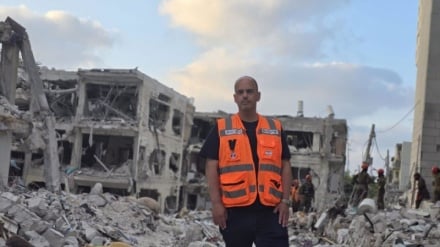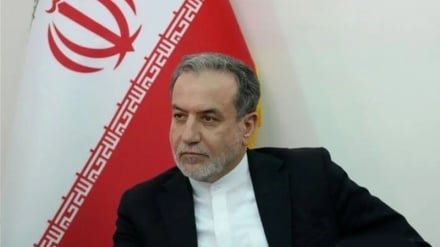85,000 children may have already died of hunger in Yemen
Saudi Arabia continues with its crimes against humanity, with the support of the US and the Zionist regime, as the people of Yemen are ground into dust with death and destruction everywhere.
Here we present you an interesting report by MintPress on the horrific situation titled: “85,000 Children May Have Already Died of Hunger in Yemen”.
The war has given rise to the world’s worst humanitarian crisis. Three-quarters of Yemen’s people require life-saving assistance and more than 8 million are at risk of starvation. Tens of thousands of people are believed to have been killed in the fighting.
A leading international aid group said that an estimated 85,000 Yemeni children under the age of 5 may have died of hunger and disease since the outbreak of the war in 2015.
Save the Children based its figures on mortality rates for untreated cases of Severe Acute Malnutrition, or SAM, in young children. The United Nations says more than 1.3 million children have suffered from SAM since a Saudi-led coalition went to war with Yemen’s popular Ansarallah Movement in March 2015.
The aid group said its “conservative estimate” was that 84,701 children may have died based on historical studies that find that 20 to 30 percent of untreated cases lead to death. Save the Children says it calculated the figure based on the number of cases reported in areas where aid groups were unable to intervene.
“For every child killed by bombs and bullets, dozens are starving to death and it’s entirely preventable,” said Tamer Kirolos, Save the Children’s Yemen director.
He added: “Children who die in this way suffer immensely as their vital organ functions slow down and eventually stop.”
Save the Children blamed the widespread starvation on a Saudi-led blockade on Yemen that was tightened a year ago.
The charity also cited recent fighting in and around the port city of Hodeida, a lifeline through which Yemen imports some 70 percent of its food and humanitarian aid.
It said commercial imports through the said port have fallen by more than 55,000 metric tons a month — enough to meet the needs of 4.4 million people. Save the Children said it had been forced to bring supplies for the northern Yemen through the southern port of Aden, slowing aid deliveries.
The overwhelming poverty in Yemen, the Arab world’s most impoverished nation, has compounded the situation.
Sukaina Sharafuddin, a Save the Children employee in Yemen’s capital, Sanaa, said “children have no access to food although it’s available on the market, while families cannot provide for their children and cannot afford it.”
The fallout from Saudi Arabia’s killing of its journalist Jamal Khashoggi at its consulate in Istanbul has drawn renewed attention to the war and devastation in Yemen.
But the fighting is still raging in Hodeida and other areas, and previous peace efforts have failed to produce any agreement to stop the violence.
Saudi Arabia dropped a relentless payload of bombs on Mustaba in the Hajjah district in just a few hours on last Saturday night, killing six civilians and injuring three. A woman and four children were among the victims of the Saudi airstrikes, which targeted homes in Ram district of the Mustaba region, dozens of kilometers away from the war’s closest frontlines.
Despite the peace efforts of the United Nations envoy Martin Griffiths, the Saudi-led coalition has stepped up its campaign of airstrikes, as warplanes bombed residential areas in Hajjah, Hodeida, Sadaa and Sana’a — carrying out over 120 airstrikes, which resulted in a high number of civilian casualties.
Ahmed Suheil, an activist who lives in the Mustaba district, said he woke up to the sounds of bombing raids. “At 11 p.m., they attacked a home in our neighboring village four times. It’s far from my house, but it was so horrible to wake up to that sound,” Suheil recounted. “Everything was shaking.”
Mohammed Jumaie, who led the village’s emergency response team said: “They do not respect their covenants. We are in a truce. Why should civilians pay with their lives for this dirty aggression?”
Recovery efforts were slowed by a lack of heavy machinery needed to access the bodies, as locals gathered around the site hoping their loved ones weren’t among the victims. One man could be heard crying: “Please, there are children under the rubble. My brother’s children. Maybe at least just one of them is still alive!”
Twenty kilometers south of the Ram district, more than five civilians lost their lives and four were injured when Saudi jets targeted the Abd al-Khamisi station at the entrance of the al-Hijjah Market. According to the local residents and the volunteer rescue team who pulled the bodies from under the rubble following the airstrikes, it was clear the men who were killed were civilians and not fighters.
This is not just the unfortunate collateral damage of war, say human-rights defenders — but an indication that civilians themselves are the targets.
Assad ash-Sharabi — a Yemeni analyst and author, who supported the Saudi-led coalition upon its inception — agreed that civilians are the focus of these attacks. He said: “Most of the airstrikes have not hit front lines. Instead, the air campaign appears focused on residential buildings and markets.”
In Heredia, where residents have been experiencing some of the most terrifying days of the war, airstrikes are ongoing. The besieged city of ad-Dreihimi has been hit with over 50 airstrikes in the past four months. And in al Hali district, al-Jarahi city, al Tuheita and al Luhyah, the dead are still being counted. Residents and medical sources said dozens of people are missing, presumed to be trapped under the rubble of collapsed buildings.
In Sadaa, the Saudi-led coalition launched about 50 airstrikes, targeting the Jabal al-Miftah communications network in Heidan with 10 airstrikes. The nearby area of Sohar was hit by nine airstrikes.
Saeed al-Mahrai, a father of two said: “Despite the announcement of a truce, we stayed in our basement apartment. We knew that warplanes would bomb us without warning.”
Right on queue, as a muezzin in a nearby mosque called the end of sunset prayers, an airstrike hit the building where Saeed`s family sought shelter. When the dust cleared, Saeed found his brother dead on the front stairs, the building behind him collapsed.
The Saudi-led coalition has killed tens of thousands of Yemeni civilians since 2015 when the war began. Moreover, the coalition’s blockade of food and medicine has plagued the country with an unprecedented famine and triggered a deadly outbreak of preventable diseases that have cost thousands of their lives.
AS/SS


